Week 5: Mollusks and Annelids
1/54
There's no tags or description
Looks like no tags are added yet.
Name | Mastery | Learn | Test | Matching | Spaced |
|---|
No study sessions yet.
55 Terms
mollusk general characteristics
exoskeleton (shell), bilateral symmetry, unsegmented, complete digestive systems, radula (not all), moderately complex nervous system
radula
rasping tongue for feeding
open circulatory system
hemolymph replaces blood, not enclosed in vessels
closed circulatory system
blood enclosed in vessels, more efficient gas exchange
molluscan body plan
shell, foot, visceral mass, mantle
adaptive radiation
diversification of a group of organisms to fulfill different niches (mollusks are a good example bc they have a huge range of morphologies but a common ancestor)
Clade Gastropoda example
snails and slugs
Clade Gastropoda feeding
use radula
Clade Gastropoda symmetry
BILATERAL, appears asymmetrical due to torsion and coiling
torsion
the visceral mass is twisted during embryonic development, mantle cavity is on anterior end above the mouth, leads to foiling (butt is on head)
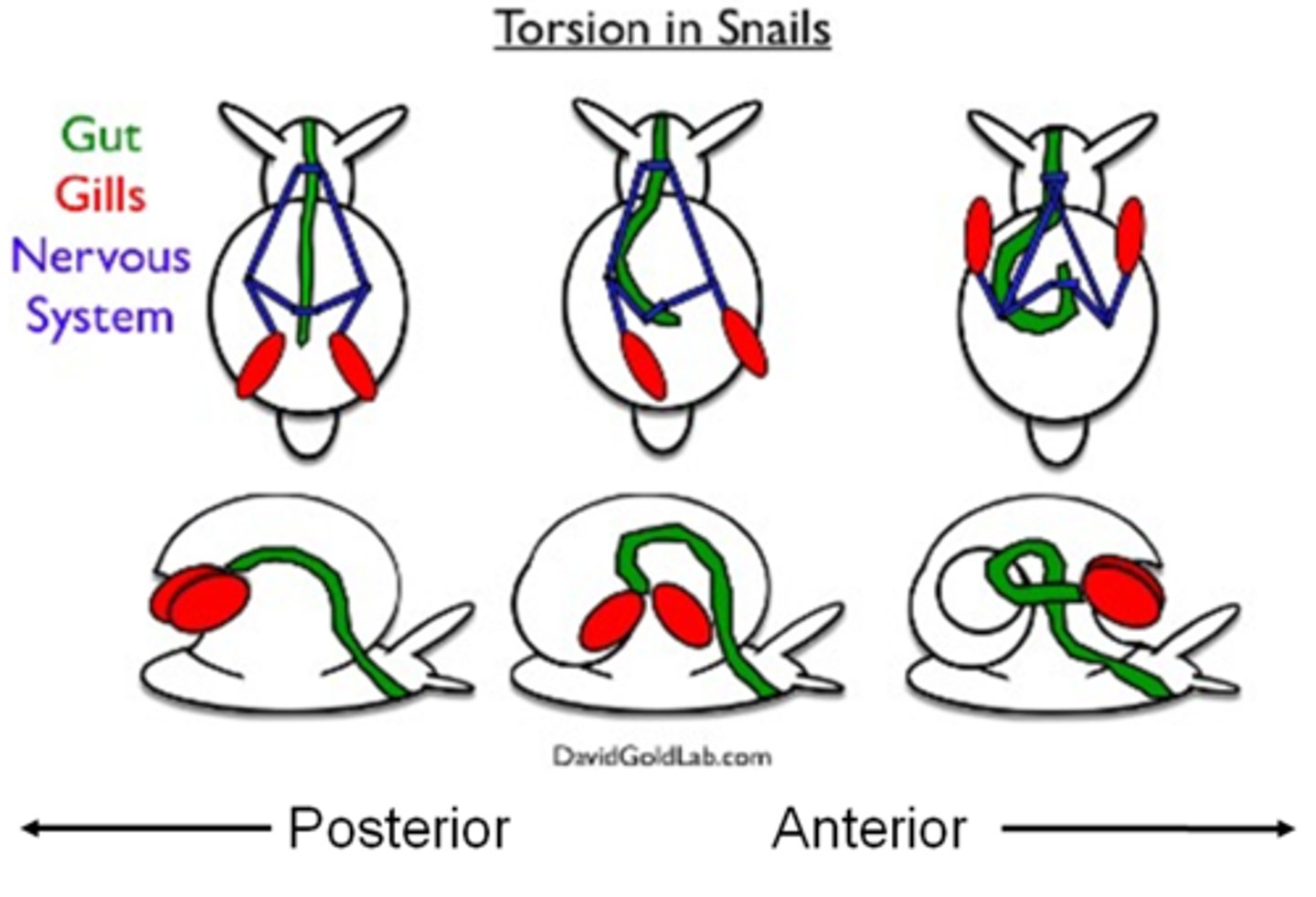
coiling
spiral winding of the shell (and visceral mass)
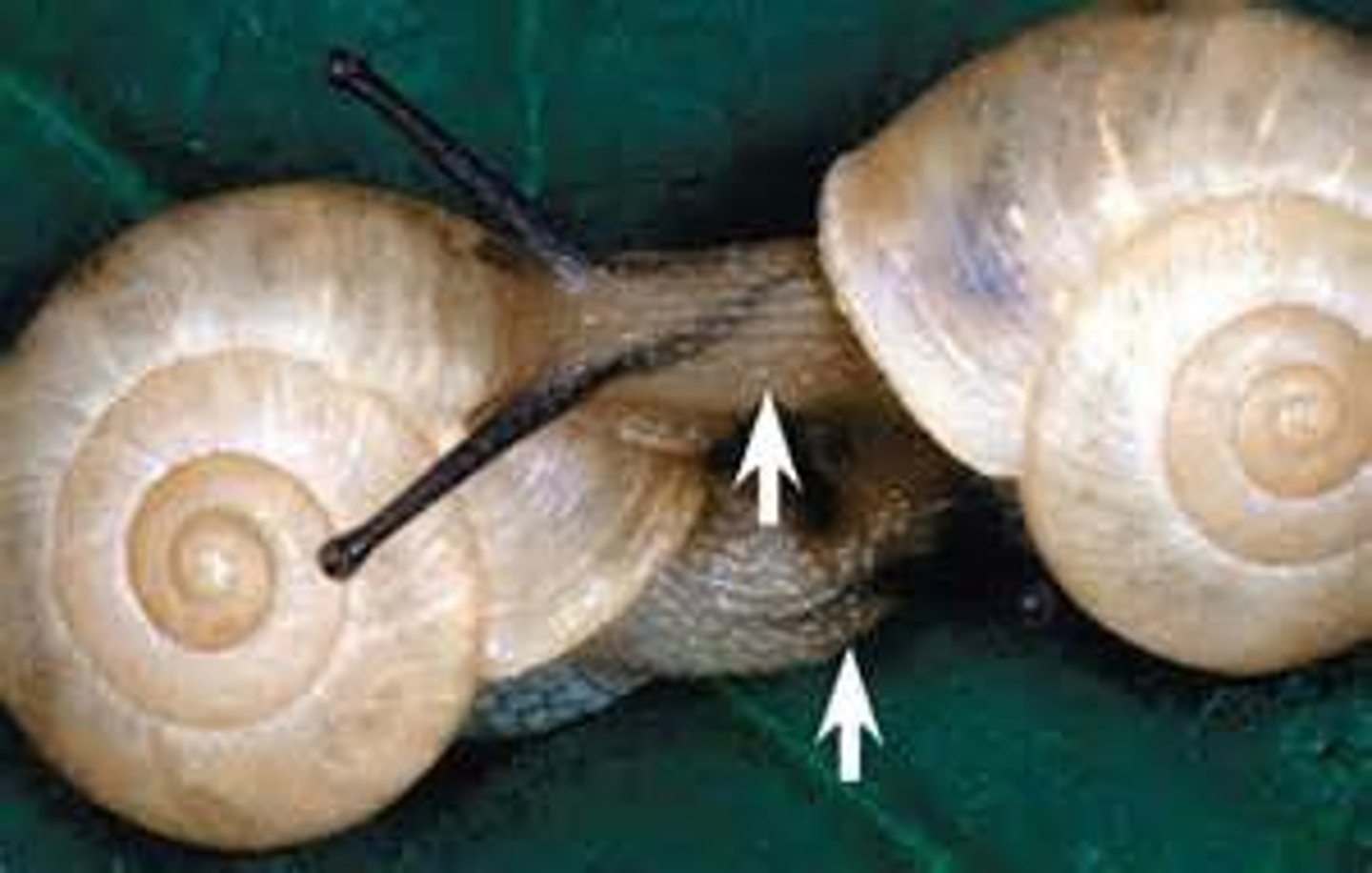
Clade Scaphopoda organism
tusk shells
Clade Bivalvia organism
clams
Clade Bivalvia feeding
no radula, suspension feeders (food trapped by mucus on gills)
clam: adductor muscles
CLOSE shell to protect body

clam: foot
movement

clam: gills
suspension feeding, gas exchange
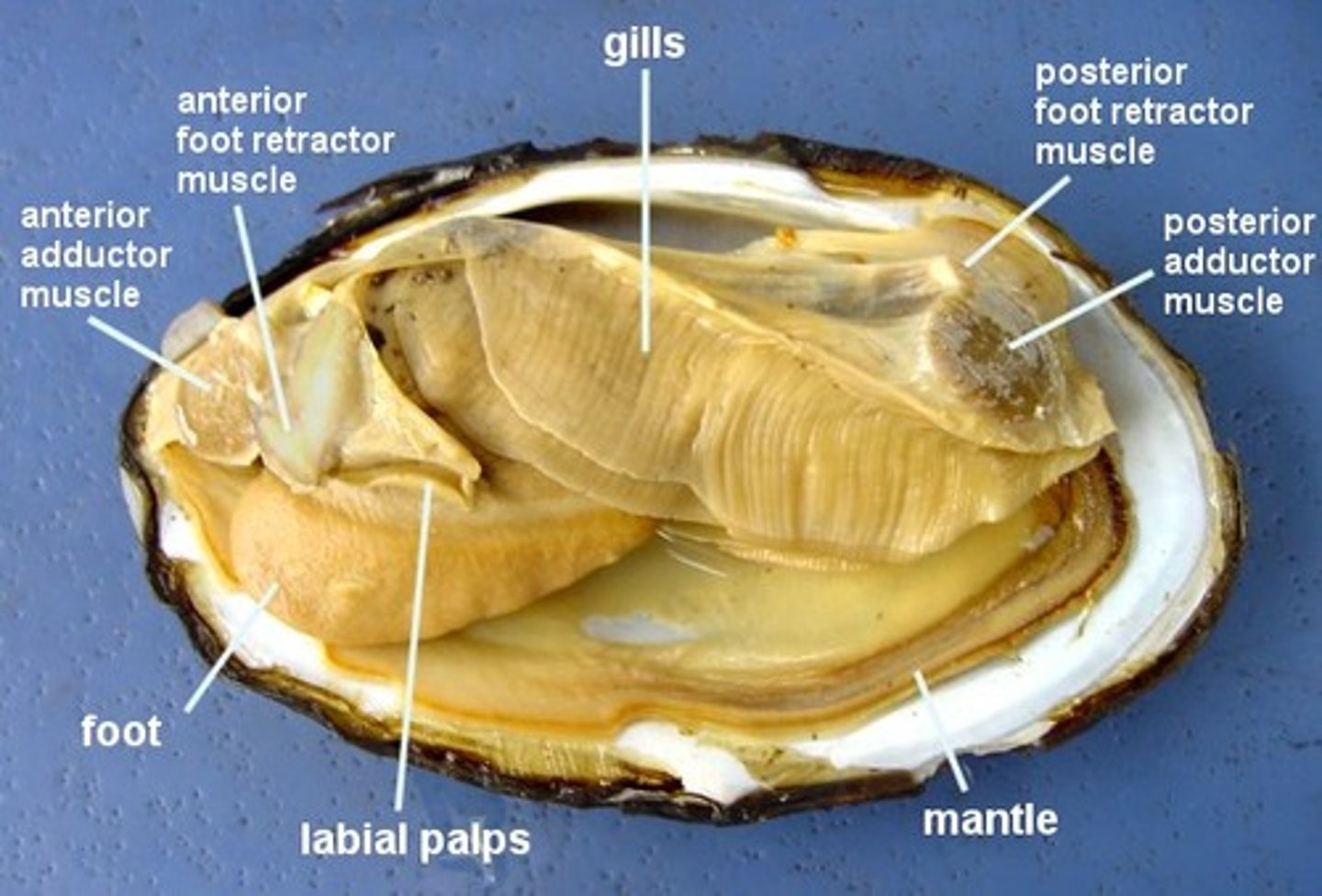
clam: labial palps
secrete mucus onto gills
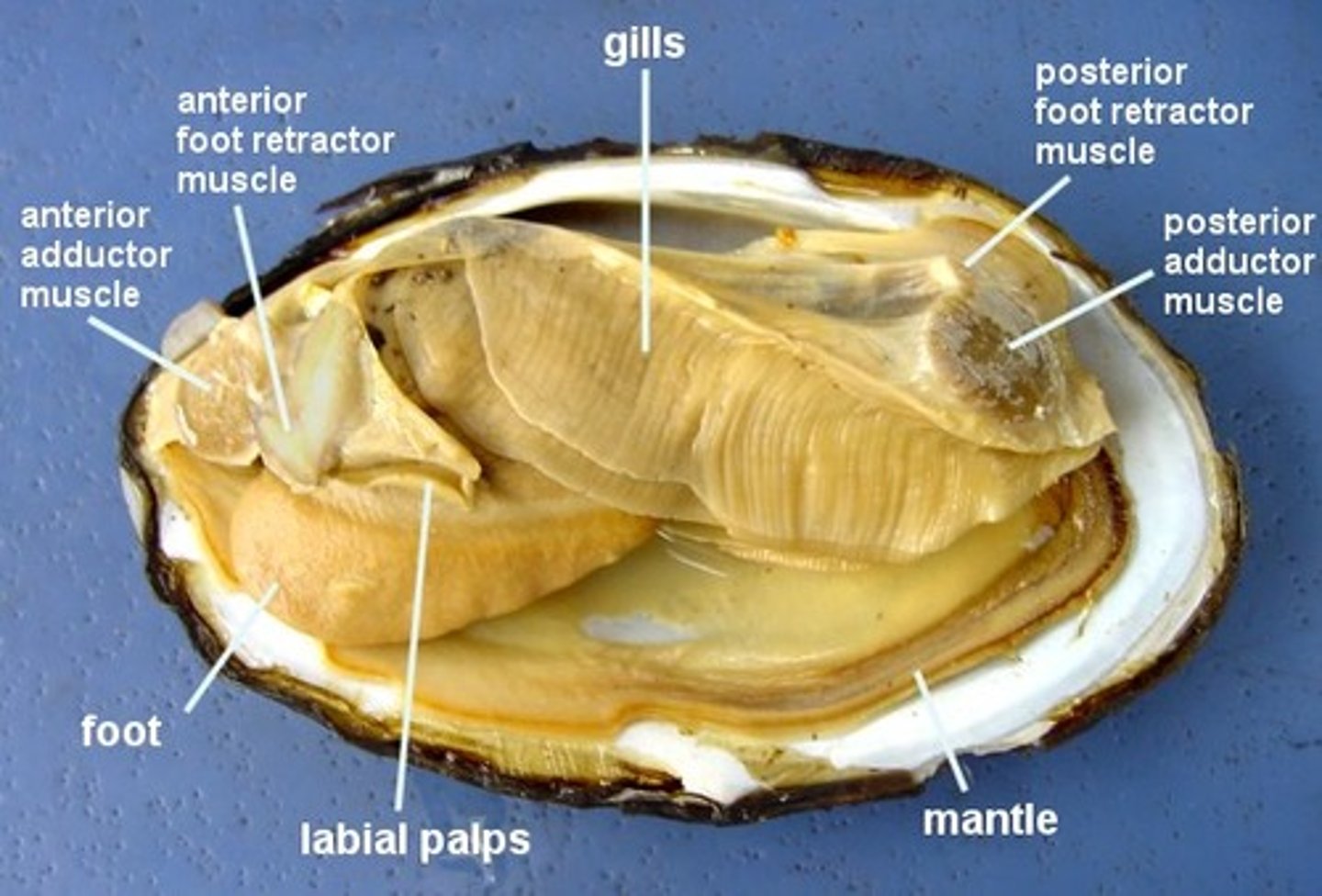
clam: mantle
secretes shell
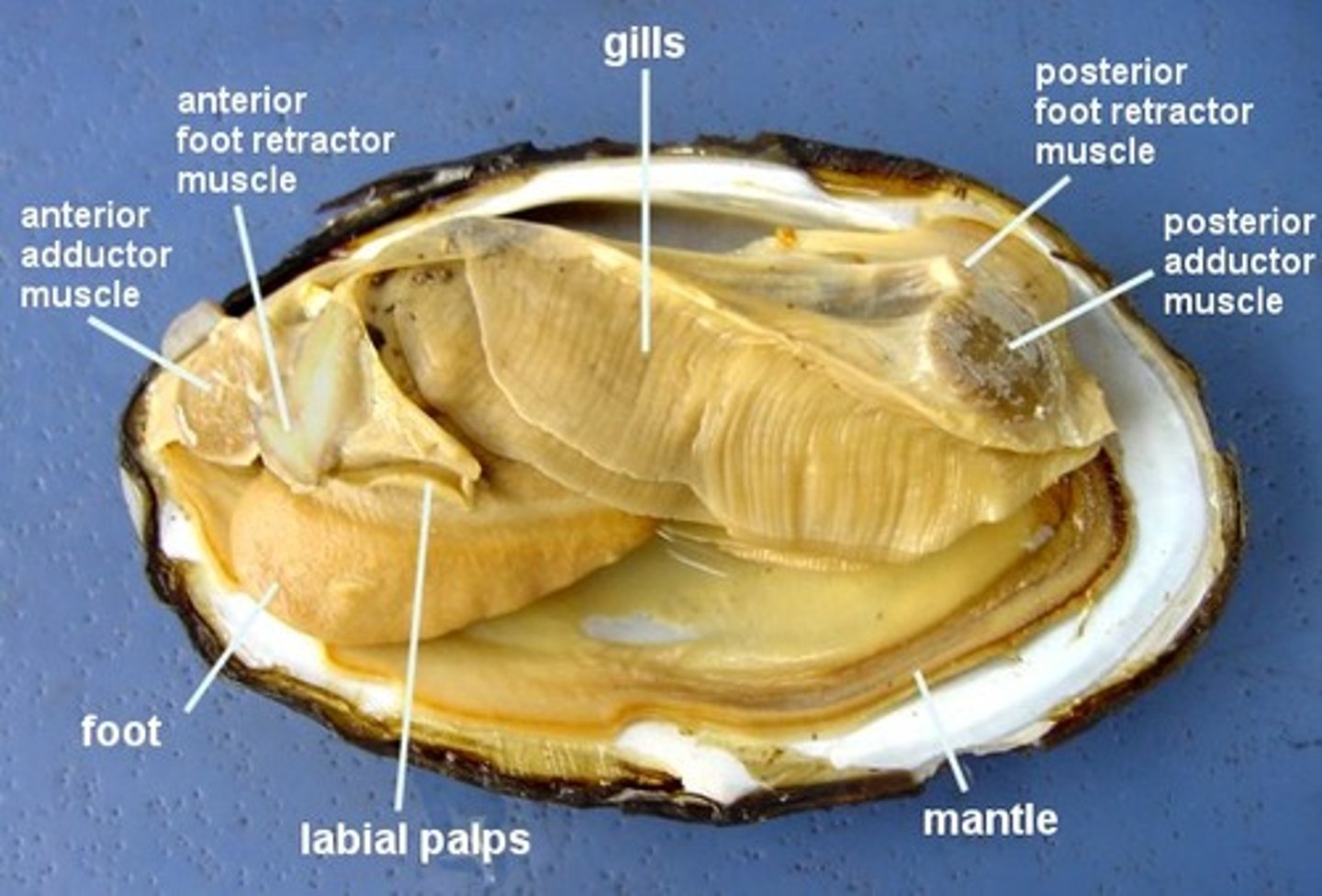
clam: umbo
origin of shell
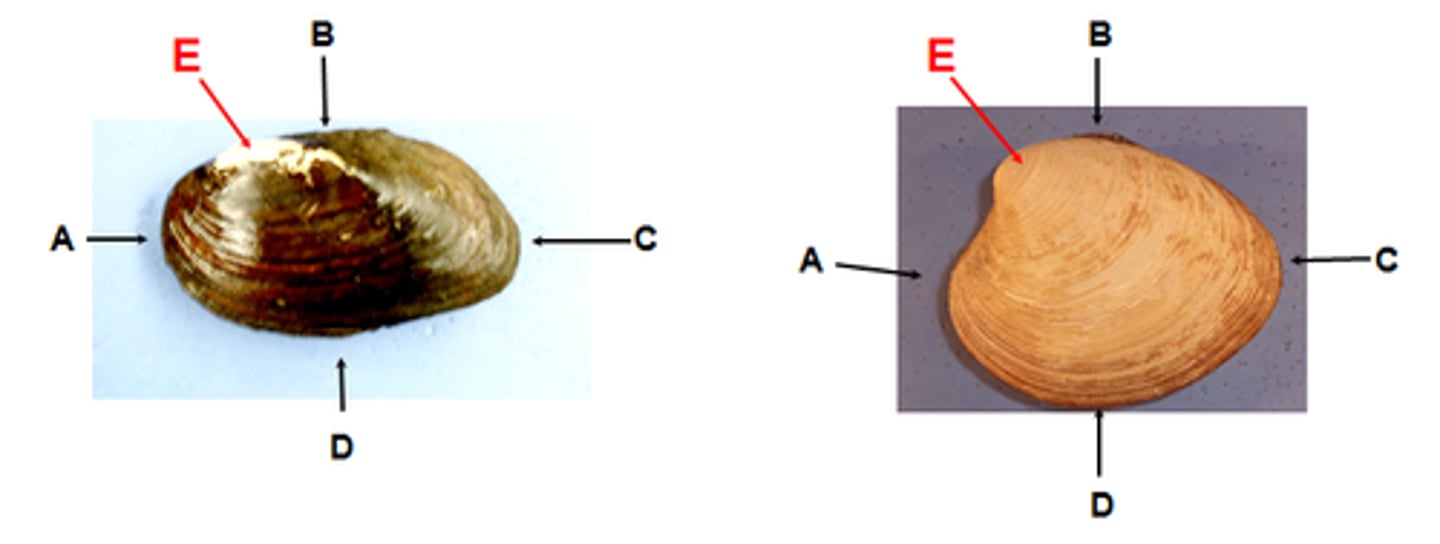
clam: visceral mass
soft portion of the body
clam: coelomic cavity
cavity lined with epithelium, arises from mesoderm, greatly reduced in mollusks
Clade Cephalopoda example
squid
squid predatory adaptations
convergently evolved eyes, intelligent, closed circulatory system
squid: mantle
fills with water when relaxed, expels water through siphon when contracted

squid: tentacles
two long, captures prey
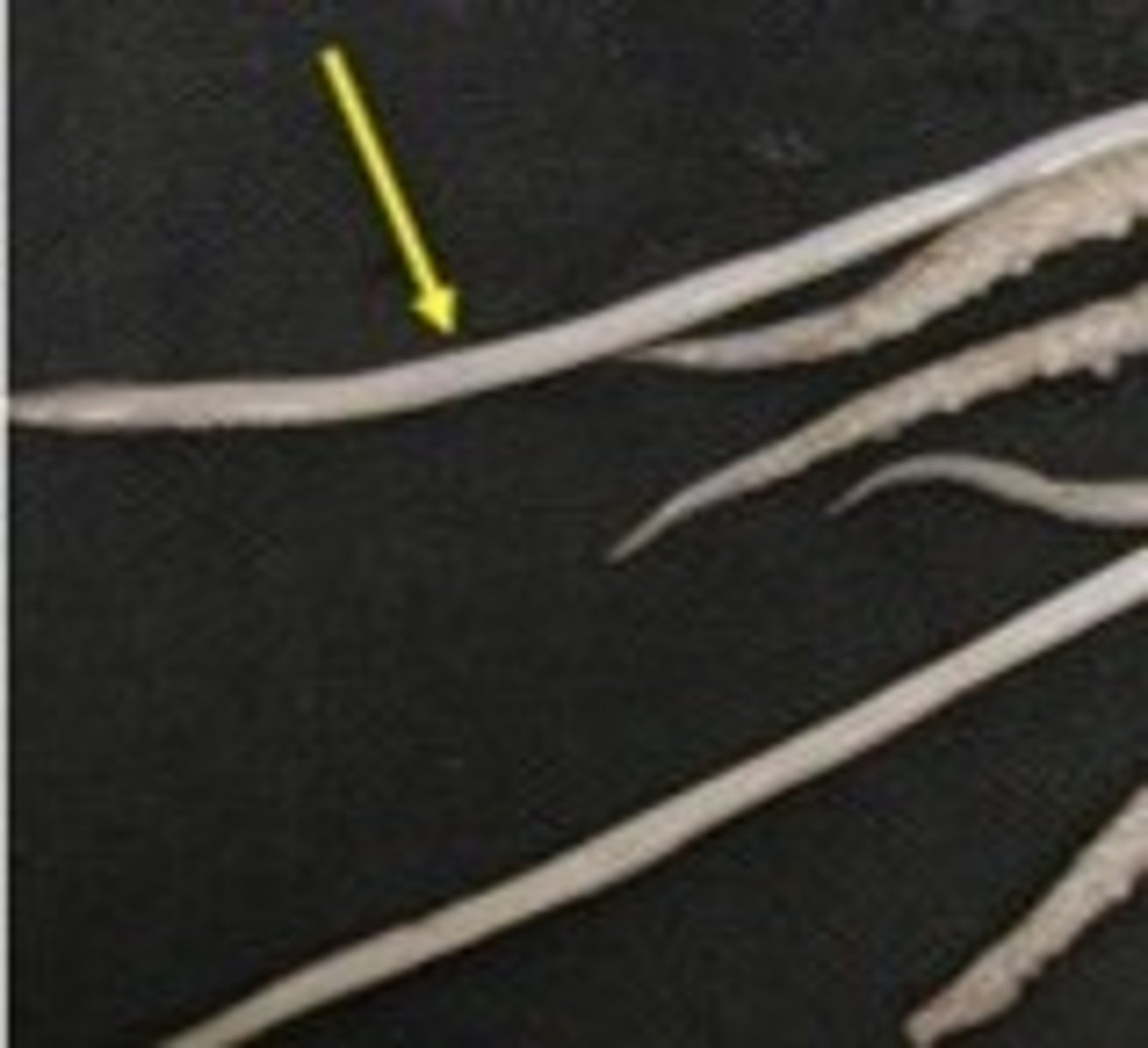
squid: arms
8 short, bring food to mouth
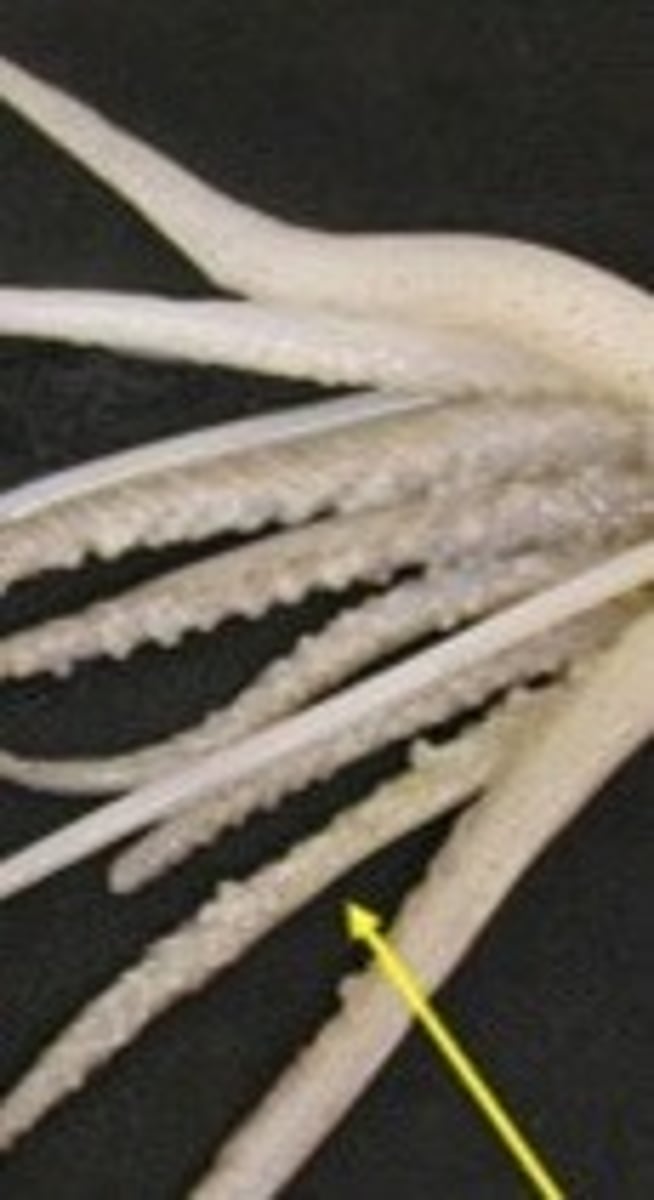
squid: siphon
water expelled for propulsion
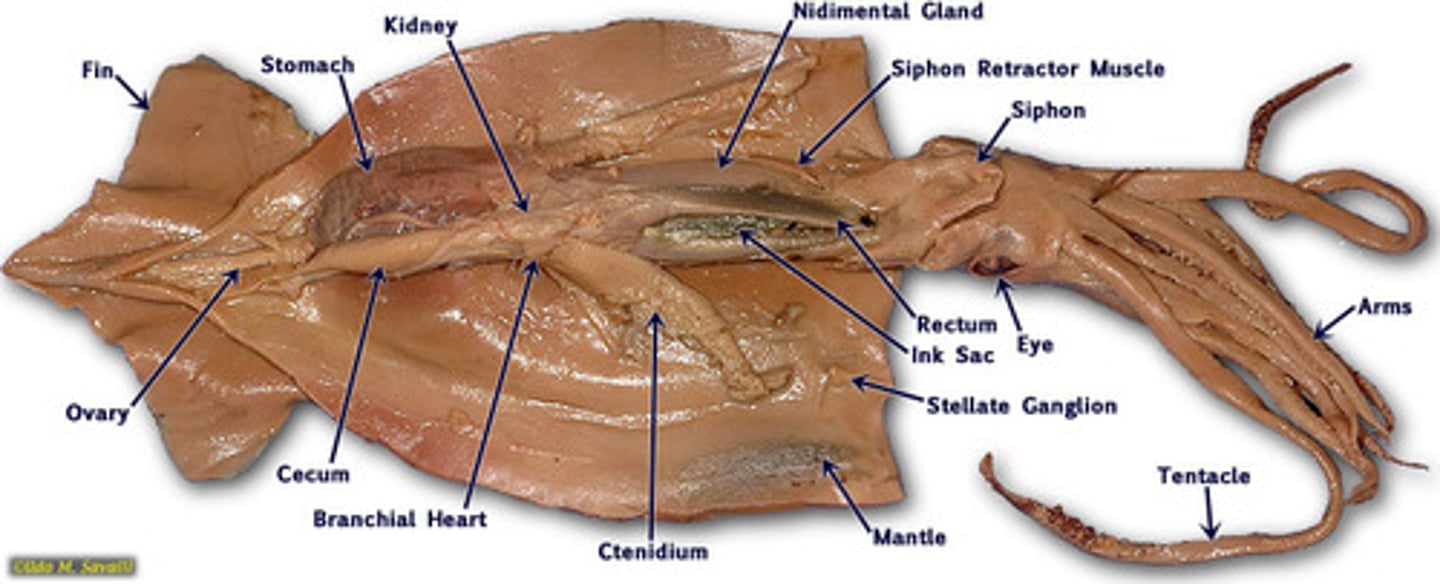
squid: eyes
convergently evolved

squid: pen
reduced shell, provides support
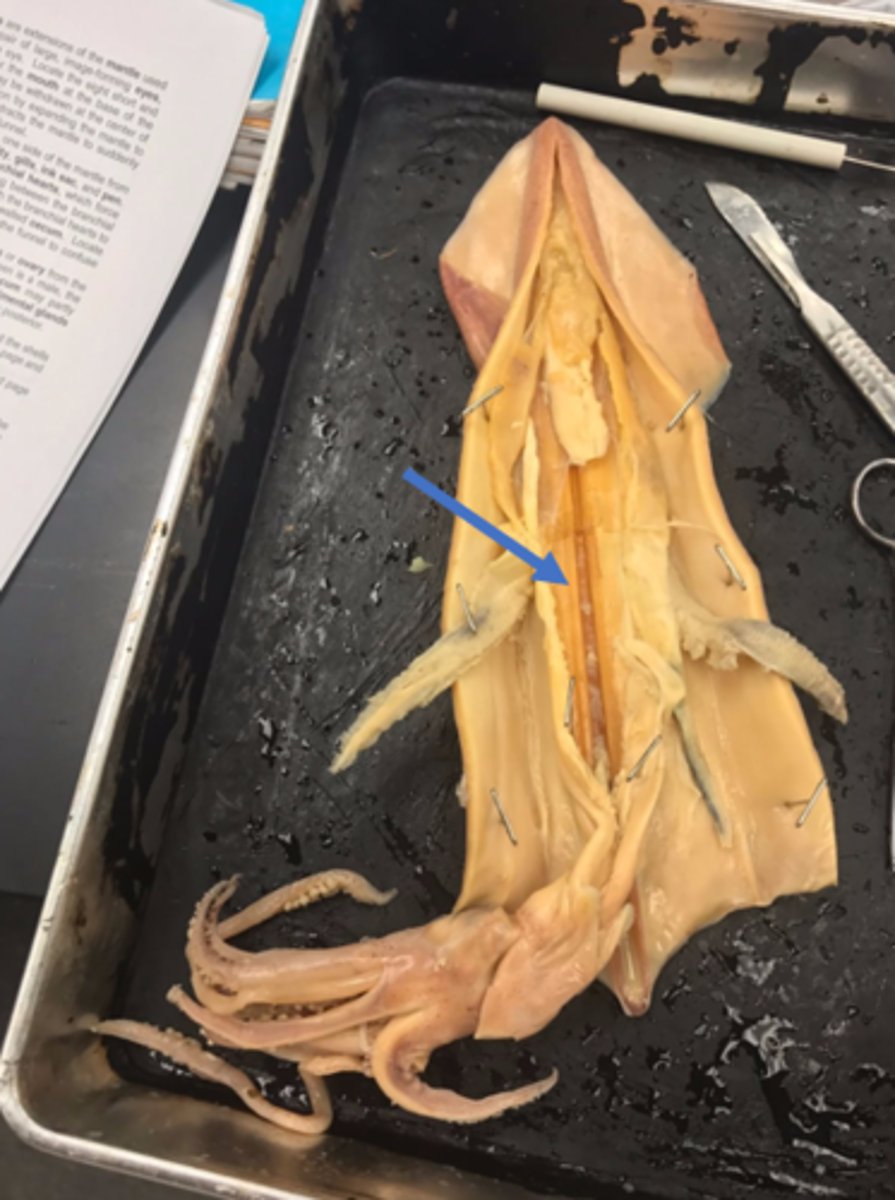
squid: gills
respiration
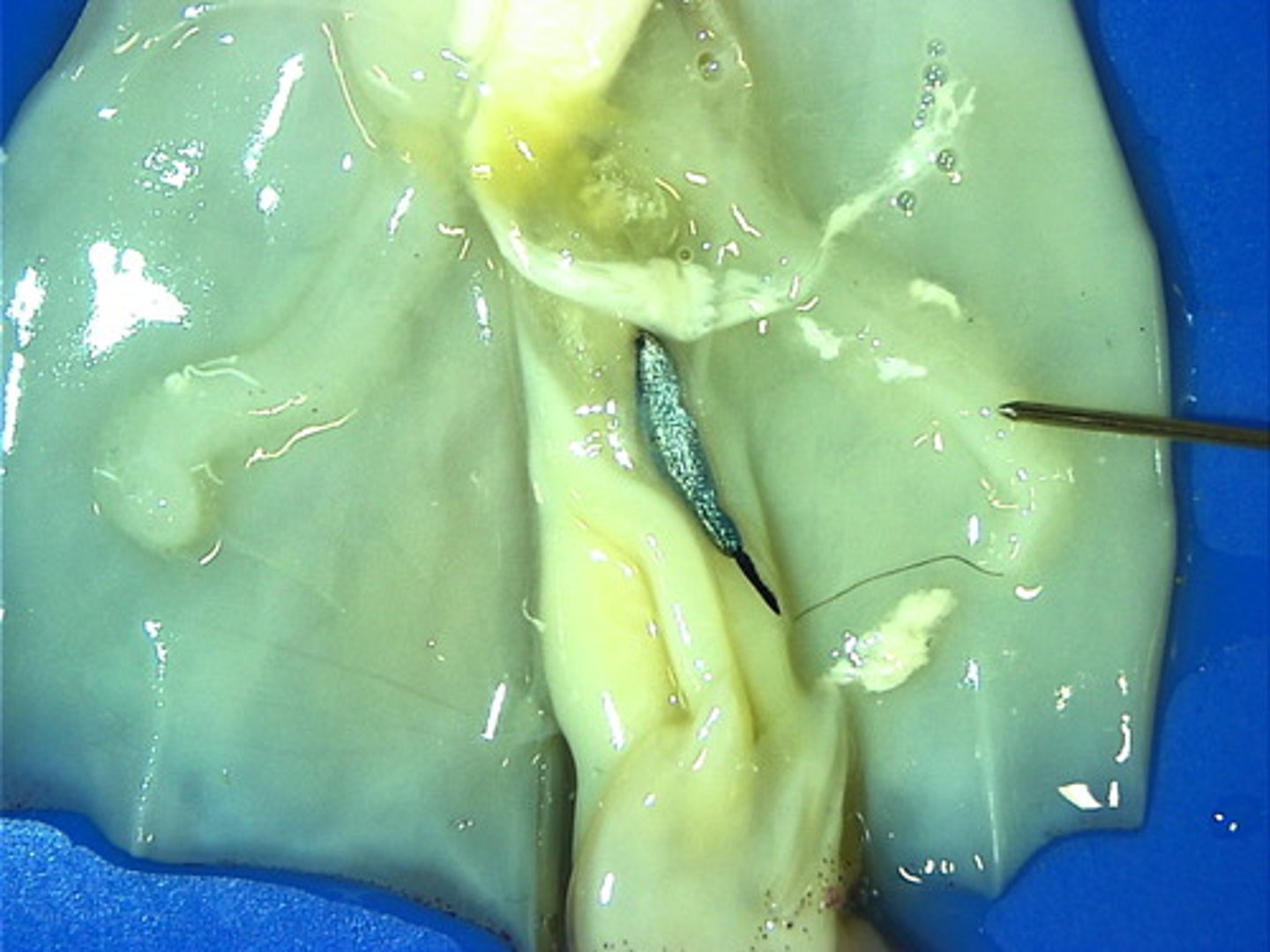
squid: ink sac
releases dark fluid when alarmed
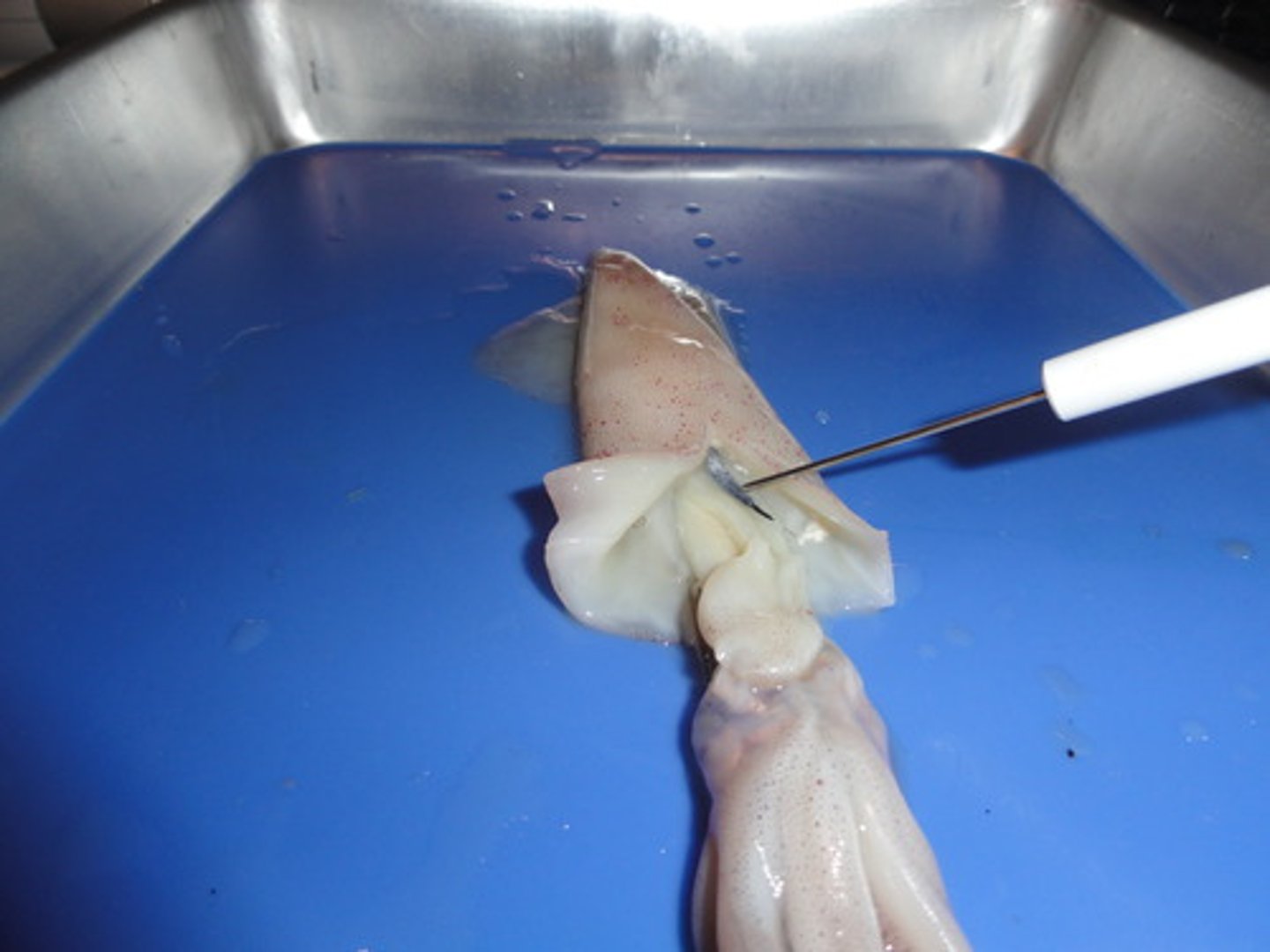
Clade Polyplacophora
chitons, use radula
annelid general characteristics
closed circulatory system, hydrostatic skeleton, complete digestive tract, monoecious, longitudinal and circular muscles
metamerism
segmentation
setae
chitinous bristles for locomotion
annelid subgroup characterization
characterized by density of setae
"Polychaeta"
many setae, Nereis
polychaeta: parapodia
locomotion and respiration

polychaeta: setae
locomotion
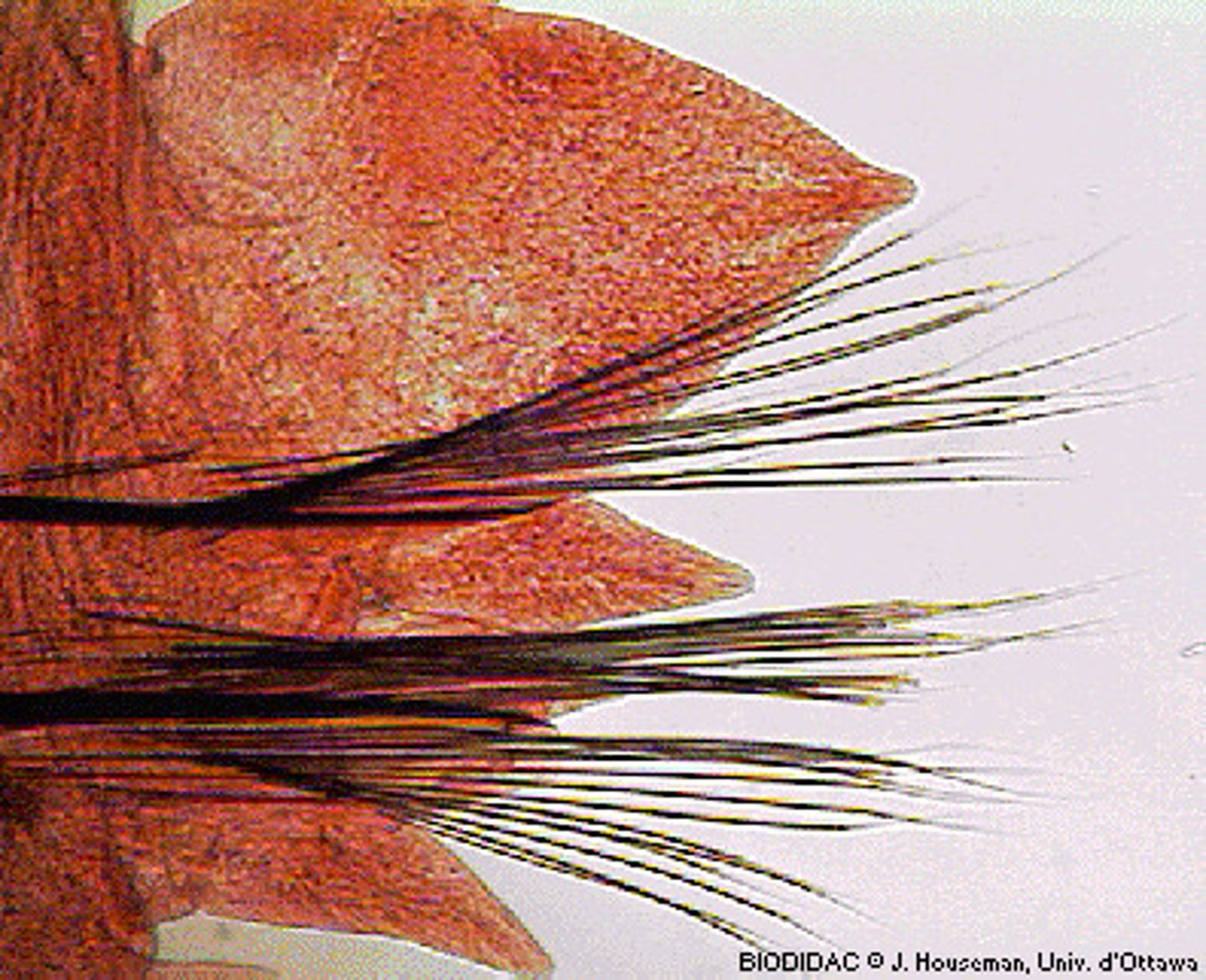
polychaeta: eyes
advanced photoreception

polychaeta: jaws
grasping and ingesting food (bottom pic)
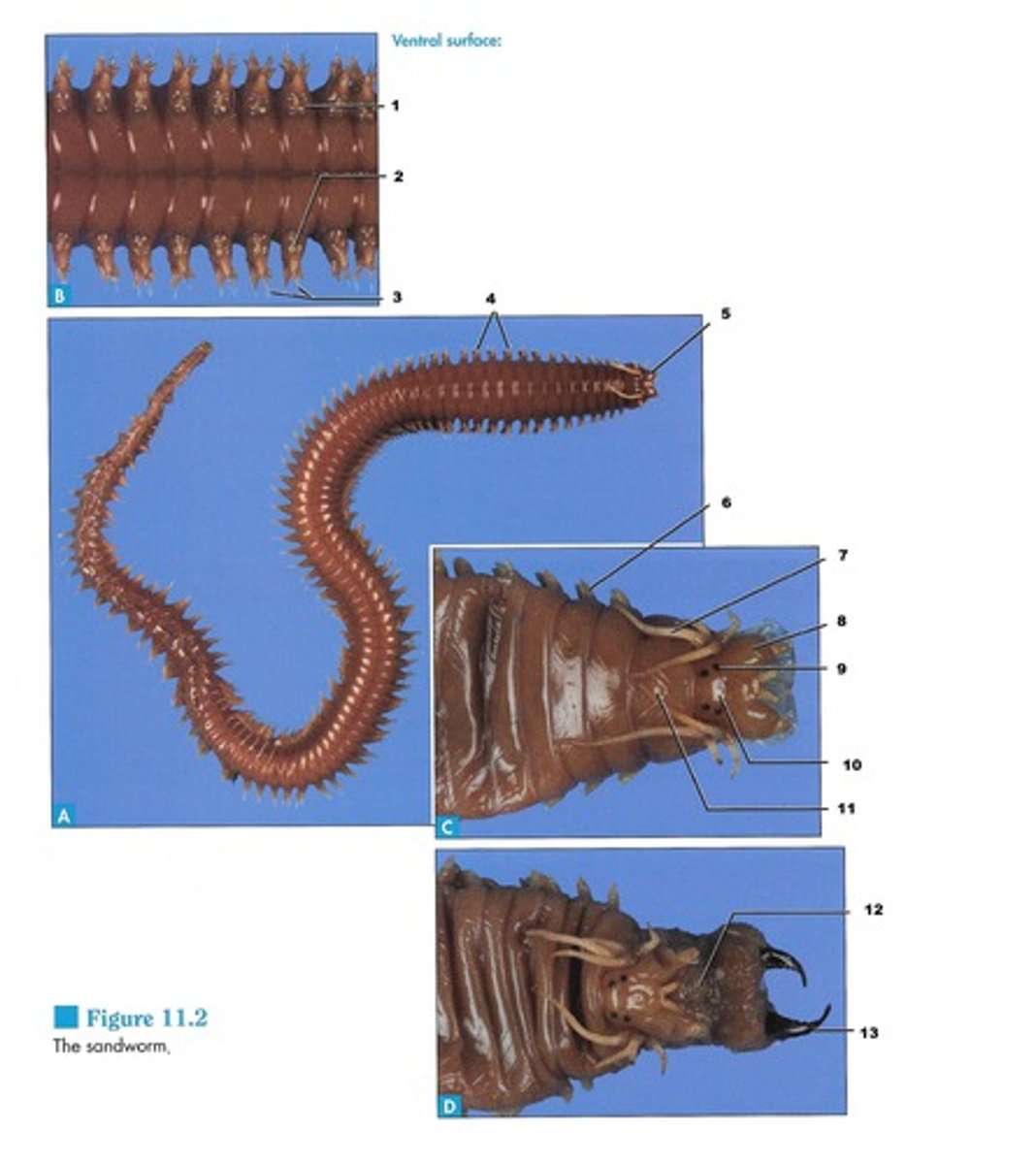
polychaeta: dorsal blood vessel
blood flow (1 in pic)
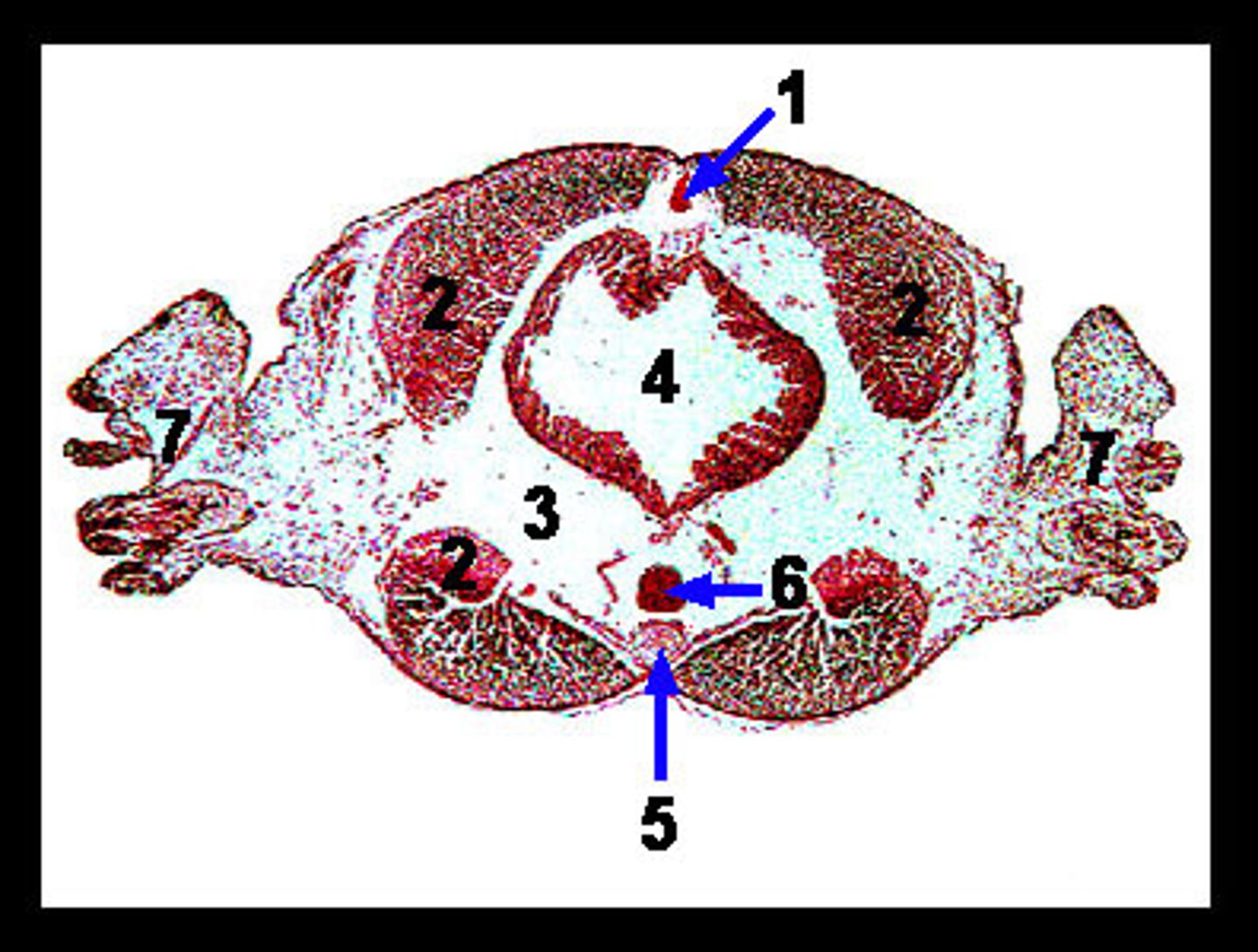
polychaeta: coelom
houses organs, provides hydrostatic skeleton (3)
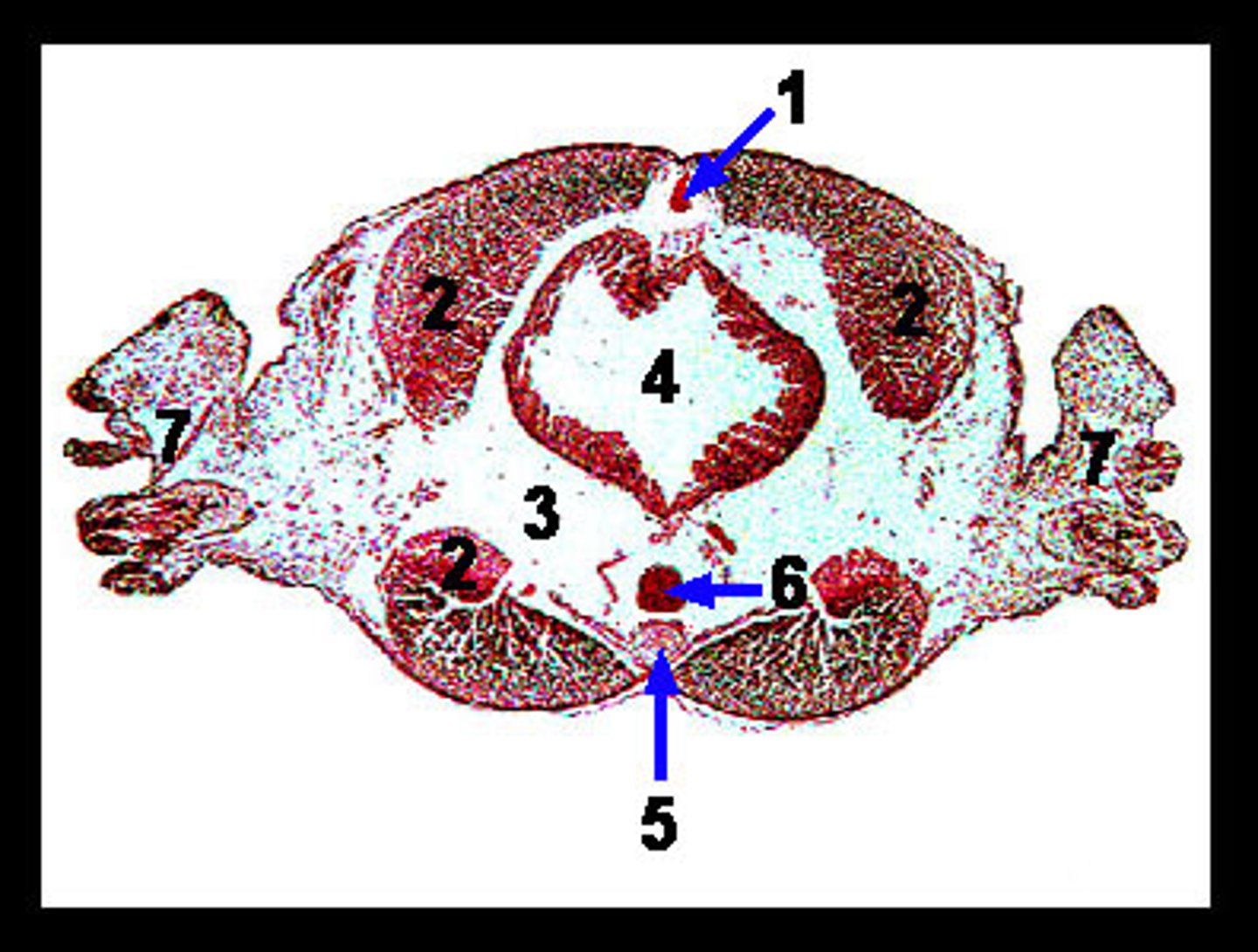
"Oligochaeta"
earthworm, few setae, gas exchange across cuticle (skin)
earthworm reproduction
two worms align ventral sides. Sperm are released from seminal VESICLES and travel to seminal RECEPTACLES of other worm. Clitellum secretes mucus and forms a cocoon. COCOON slides forward, collecting eggs and sperm, slips off into soil, where fertilization occurs.
earthworm: seminal receptacle
store sperm from mate during reproduction
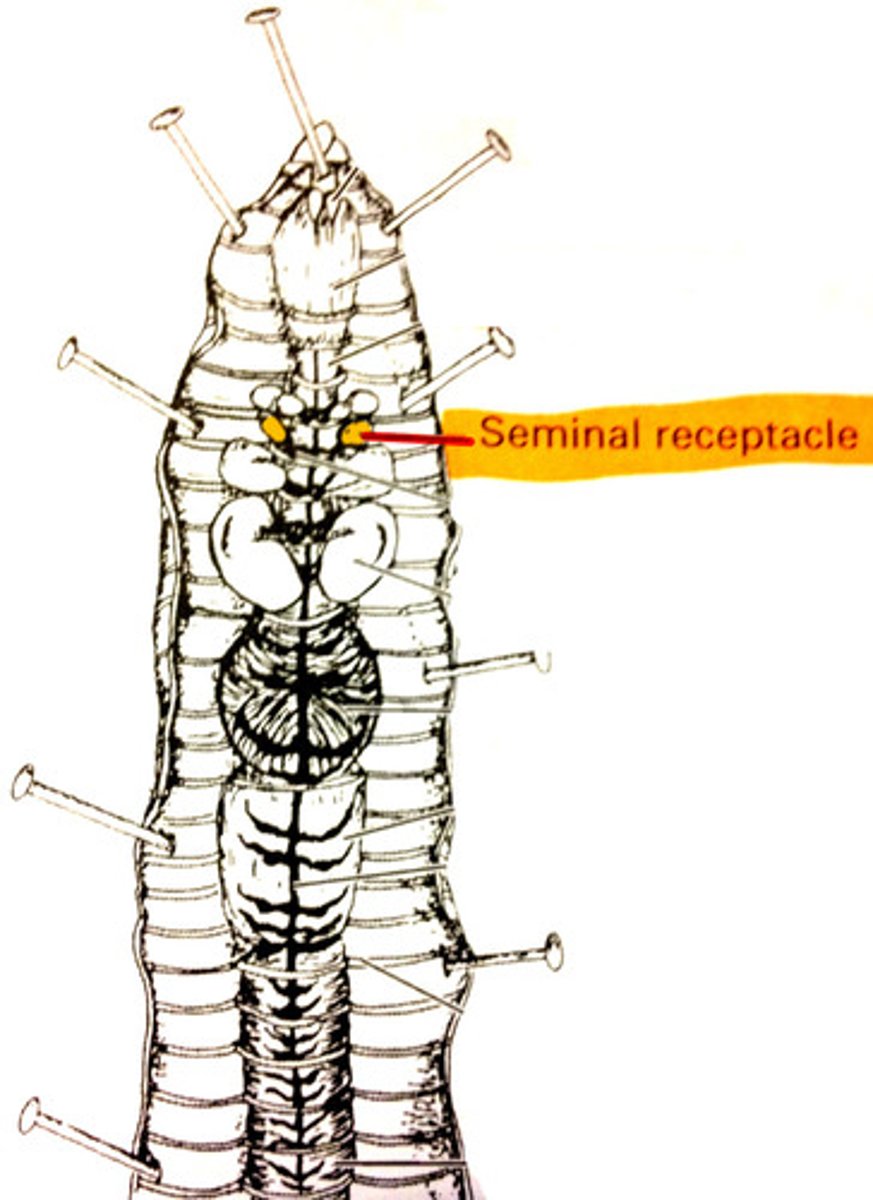
earthworm: seminal vesicles
sperm matures
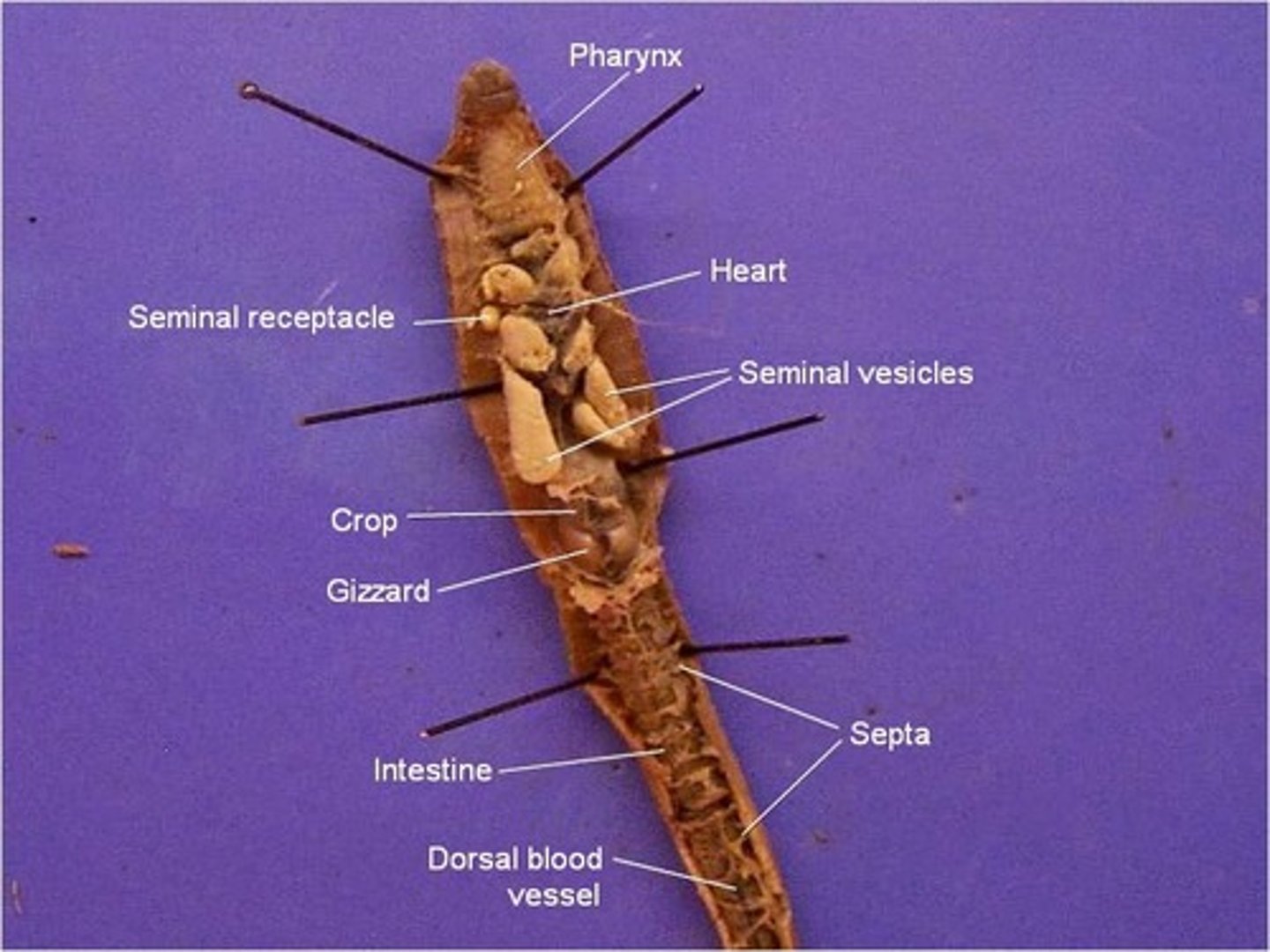
earthworm: crop
store food
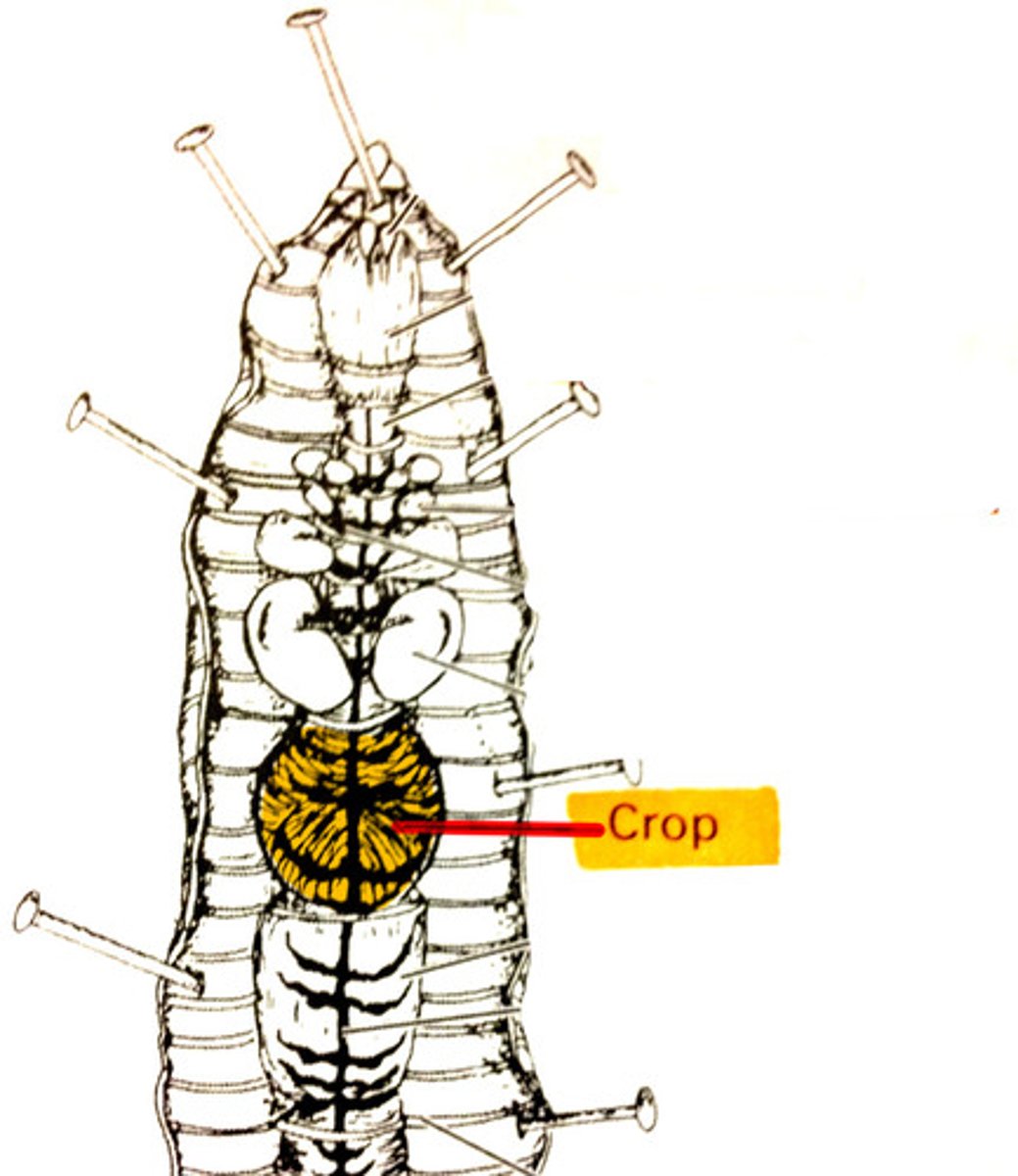
earthworm: gizzard
grind food
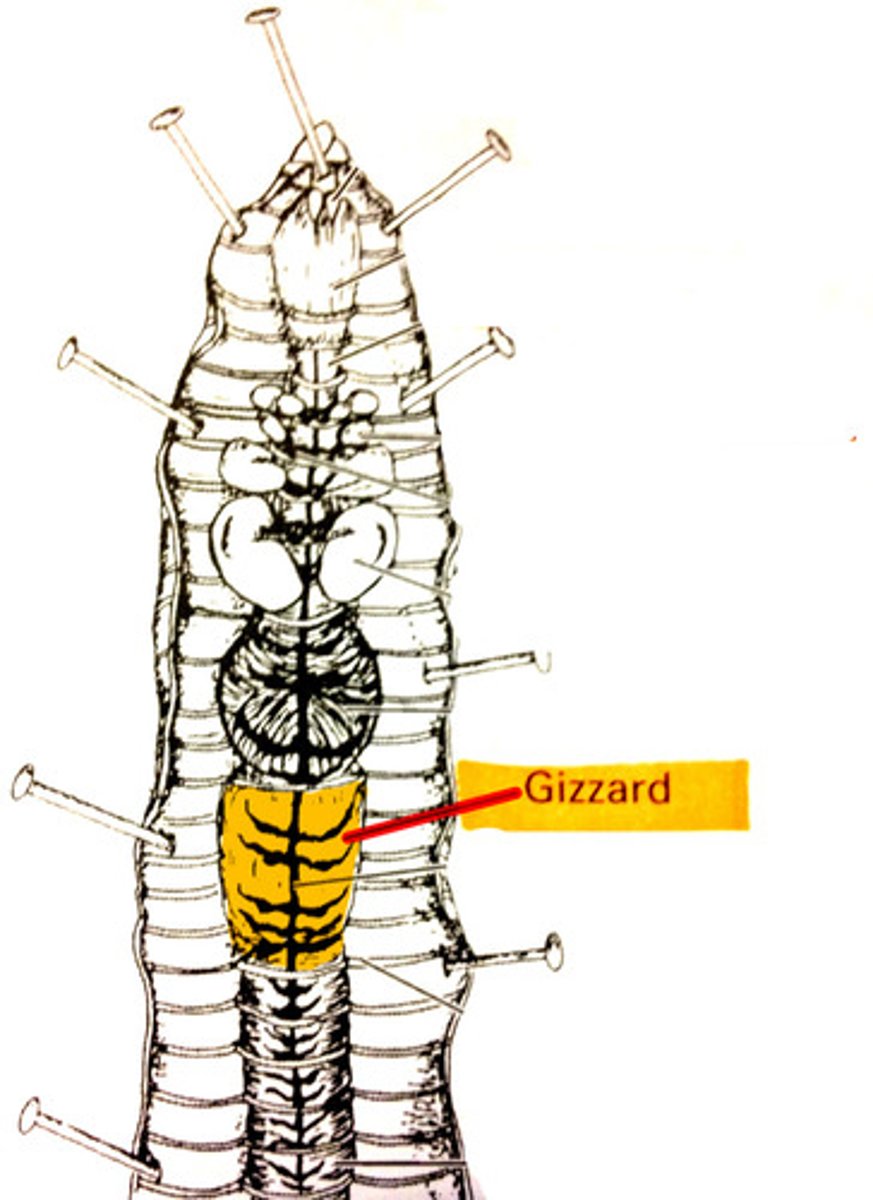
earthworm: septa
internal division of body
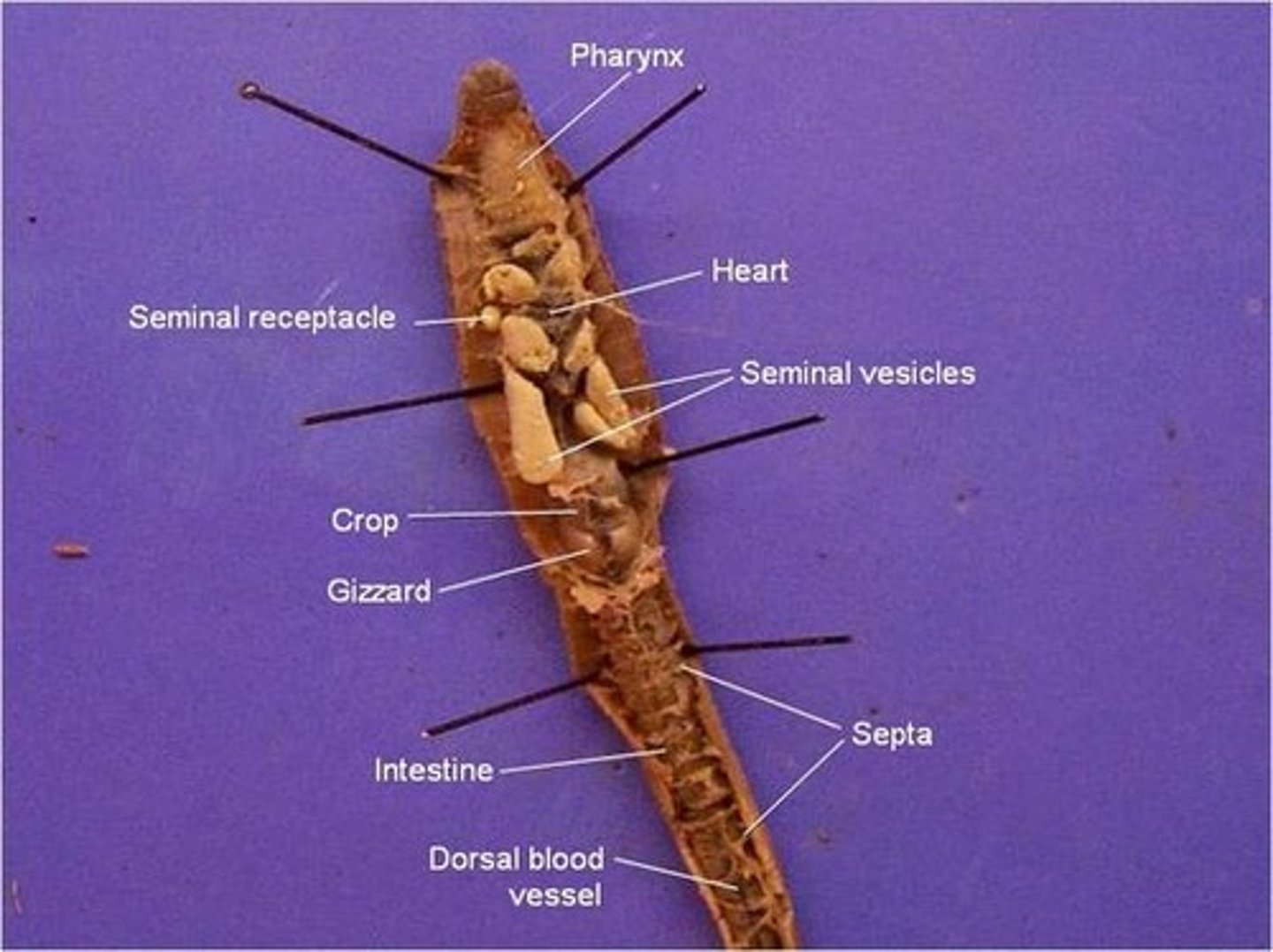
earthworm: heart
blood flow

earthworm: pharynx
pulls soil into buccal cavity (2)
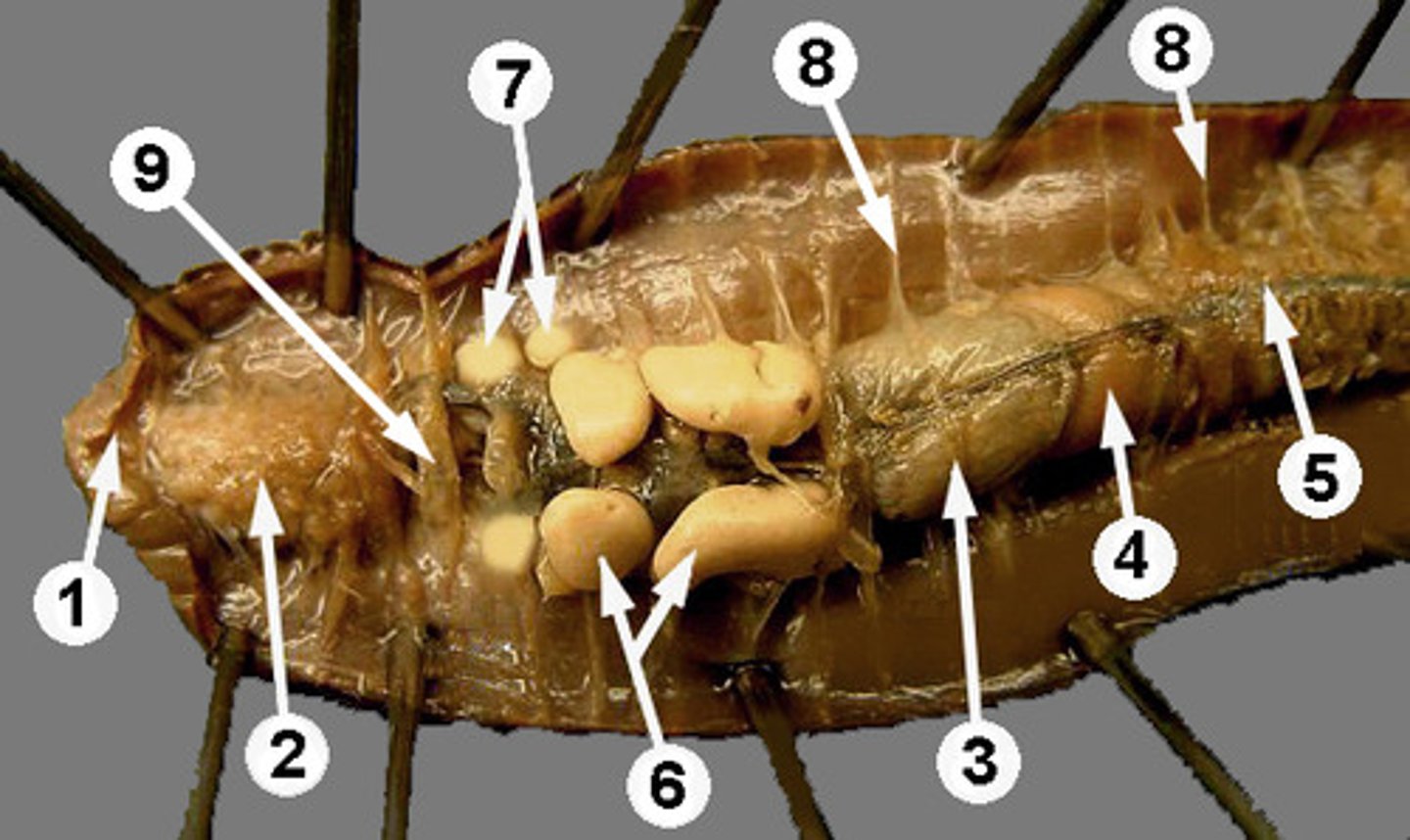
earthworm: clitellum
Secretes mucus during reproduction
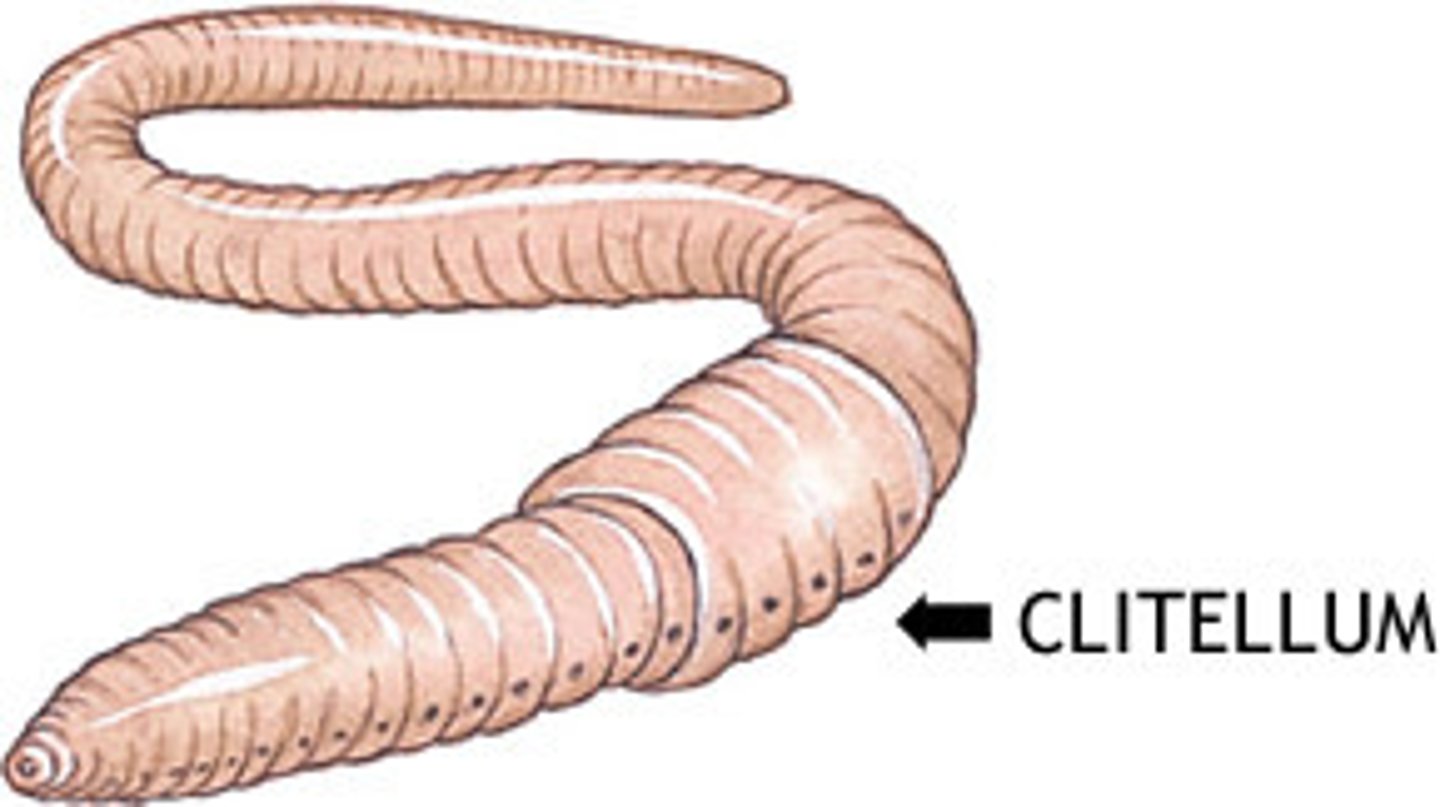
Clade Hirudinea
no setae, leeches